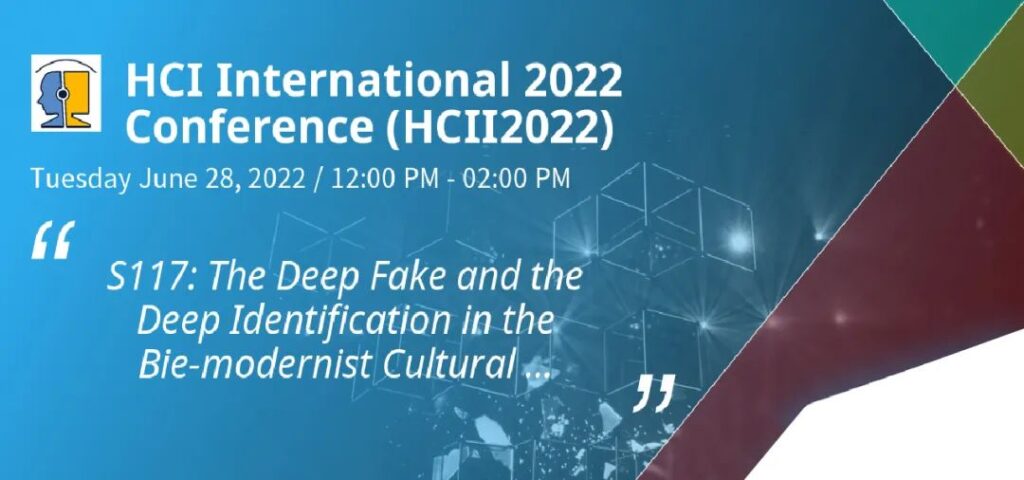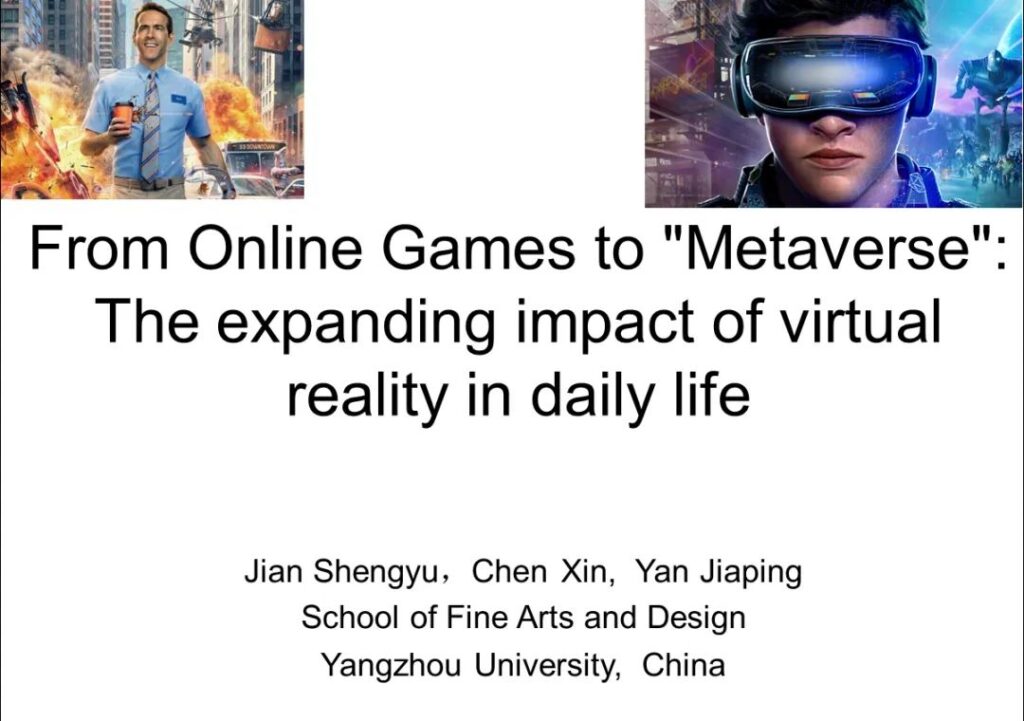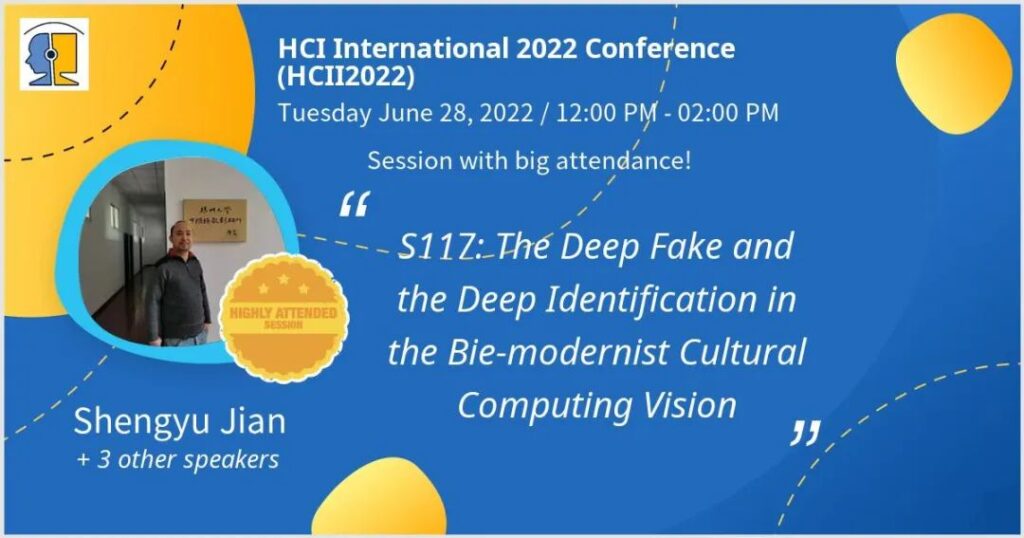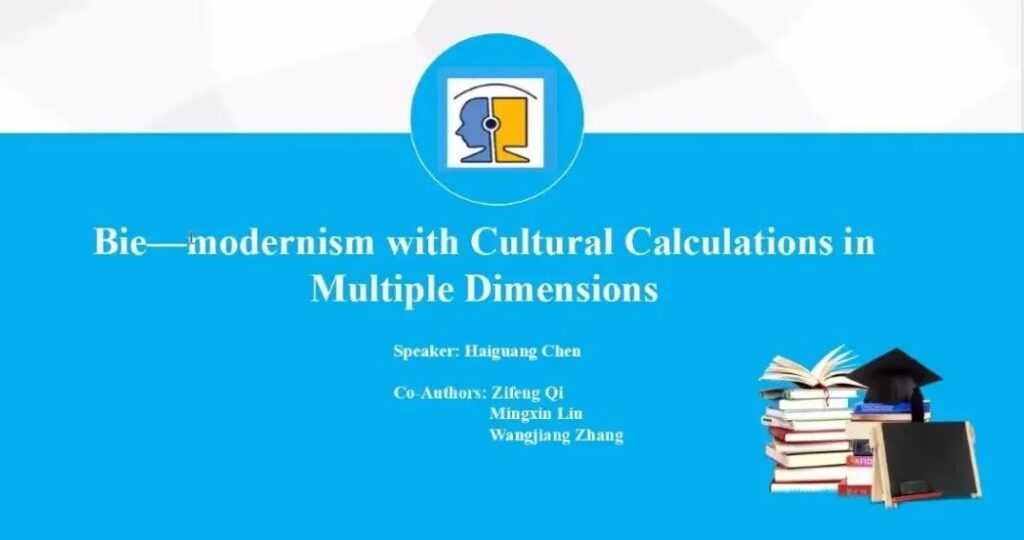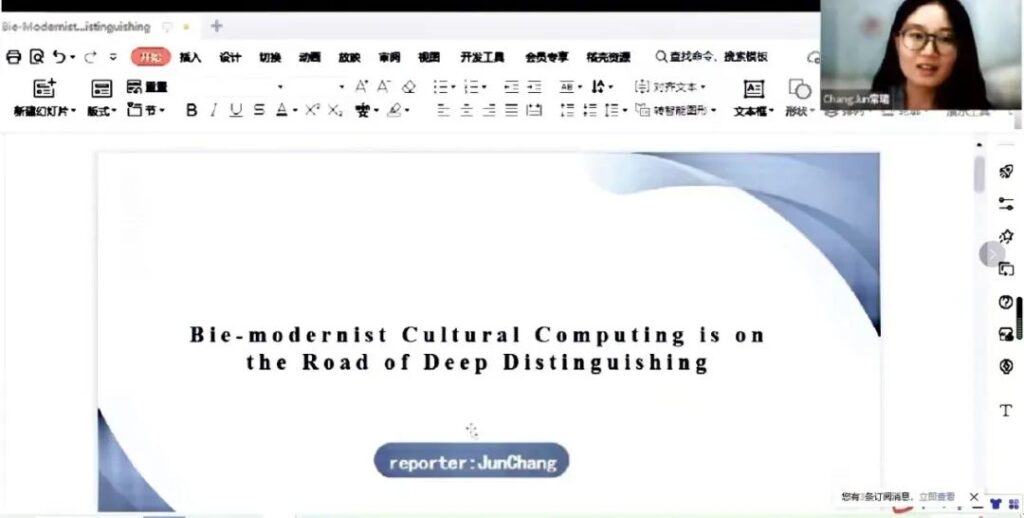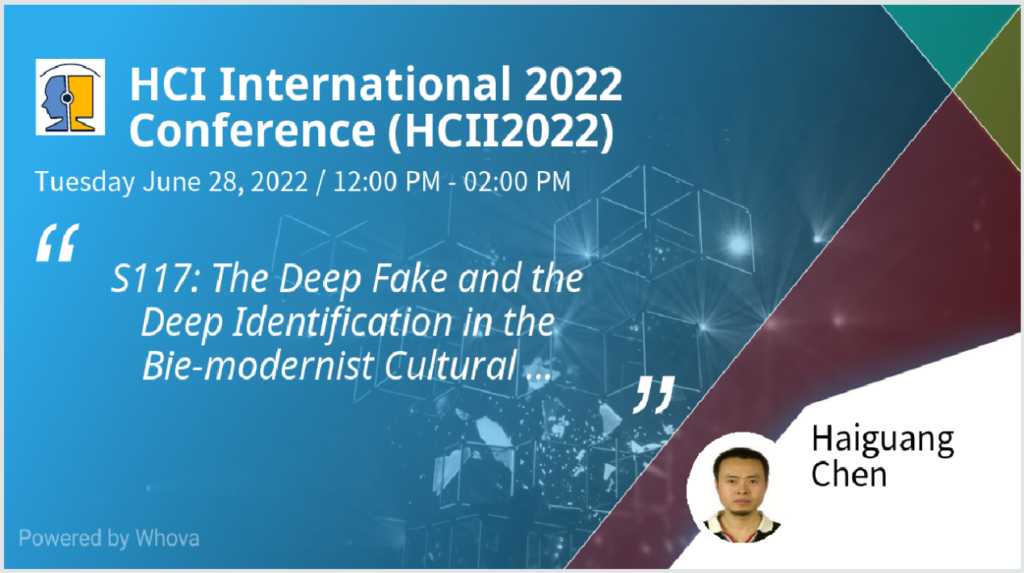Deep Fake and Deep Distinguishing(Identification) in the Cultural Computing Field of Bie-modernism – The 24th HCII Conference set up a special session on Bie-modernism.
The 24th World Human-Computer Interaction Conference (HCII 2022) was successfully held online from June 26th to July 1st, 2022. The conference has a variety of topics, and experts and scholars from all over the world discussed in 310 sub-sessions according to different topics. From 6 p.m. to 8 p.m. on June 28, the founder of Bie-modernism theory, the academic consultant of the CCBMS , the member of the organizing committee of the 24th World Human-Computer Interaction Conference, Professor Wang Jianjiang of the School of Humanities of Shanghai Normal University, doctoral advisor and international computer expert Despina jointly hosted the 117th group of The Deep Fake and the Deep Identification in the Bie-modernist Cultural Computing Vision. Several scholars, such as Jian Shengyu, Chen Haiguang, Wu Wenzhi, Chang Jun, Chen Xin, Yan Jiaping, Qi Zifeng, Liu Mingxing and others, attended the meeting to make speeches and interact. The meeting was broadcast synchronously through Whova and Zoom.
At the conference, Professor Jian Shengyu of Yangzhou University pointed out the fact that the subjective imagination of modern human beings exists objectively in the form of virtual reality by taking online games and the “metauniverse” as reference samples in From Online Games to “Metaverse”: The expanding impact of virtual reality in daily life. On one hand, through the analysis of various data and materials, he pointed out that the virtual world composed of metauniverse and immersive games has brought negative effects on people’s internet addiction, and analyzed the internal causes of internet addiction from the perspective of personal weariness and social weariness. On the other hand, it also points out that the construction of the virtual world marks the expansion of human living space and may create more opportunities in the future.
In Bie-modernism with Cultural Calculations in Multiple Dimensions, Professor Chen Haiguang of Shanghai Normal University uses character recognition as a reference sample, and applies word segmentation algorithm, triangle graph model, Doc2Vec model, decoding program, etc. in cultural computing to Bie-modern context. On this basis, the input sequence is analyzed using multiple practical processes such as practical training, practical prediction and practical evaluation to establish a huge data set, and the characteristics of the four masters and apprentices in Journey to the West are classified, predicted and screened from five aspects such as background, character, appearance, action and language, thus achieving a further combination of computer and philosophy.
In Historical staging of Design of China on Perspective of Bie-modern, Wu Wenzhi, an associate professor of Shanghai University of Engineering and Technology, takes the historical stages of modern Chinese architecture as a reference sample, and points out the main dilemma facing the history of modern Chinese design. By discussing the general and special history, the “China-centered” and architectural ontology, the non-contradictory relationship between modern architecture and modern architecture in the stages of Chinese modern and modern architectural history, the particularity of Chinese modern architectural history formed in the social form and historical stage of China is clarified. In his speech, Wu Wenzhi pointed out that “Bie-modern” is different from the previous definition of modern. It may be a very useful theoretical tool for staging the history of modern and contemporary design in China, and it has important value and significance for promoting the study of the history of modern and contemporary design in China.
In Bie-modernist Cultural Computing is on the Road of Deep Distinguishing, Chang Jun, a PhD candidate in Literature and Art at Shanghai Normal University, explains the “Deep Distinguishing” theory of other modernism which opposes “deep pseudo” technology in theory and technology. Using the poem creation of the artificial intelligence writing software JiuGe as a reference sample, she points out the possibility of Deep Distinguishing theory of Bie-modernism with the artificial intelligence writing. Artificial intelligence writing simulates the way, emotion, image and language of human writers through in-depth study and Simulation of algorithms and data. This is in agreement with the goal of Bie-modernists in criticizing the true and false modernity.
During the meeting, Professor Wang Jianjiang, the co-chairman, and various experts and scholars held questions, answers and discussions on some issues:
1.What are the connections and differences between Metauniverse and the concept of digital games? Professor Jian Shengyu answered: ‘The two concepts have a familial closeness. Digital games have paved the way for people to imagine, understand and design the metaverse in terms of thought and technology. The computer graphics that support the metaverse at its base are closely related to digital game applications. The metaverse is a new thing that emerges after entertainment digitization has developed to a certain stage.’
2.Can cultural computing for character recognition become a universal recognition method? What is its principle? Professor Chen Haiguang answered: ‘In principle, cultural computing for character recognition has universal applicability, not only suitable for character recognition applications but also applicable to other fields. By establishing models and making integrated judgments from different dimensions, the data for measuring authenticity can be quantified.’
3.What is the difference between true modern design and pseudo-modern design? How to identify true and false modern design in the field of computer science? Associate Professor Wu Wenzhi answered: ‘Modern design has clear modern value judgments such as democracy and equality. However, under the commercial model, a large number of pseudo-modern designs that are hijacked by capital will inevitably appear. In this regard, computer algorithms and virtual models can be used to distinguish between true and false designs.’
4.How can the theory of deep differentiation from modernity be combined with artificial intelligence writing? Chang Jun, a doctoral student at Shanghai Normal University, answered: ‘Artificial intelligence writing and the theory of deep differentiation from modernity achieve a fit between algorithms and ideas in terms of truth-seeking. The main task of postmodern cultural computing is to identify true and false modernity. Artificial emotional computing simulates and restores various human emotional patterns and endows human psychological mechanisms. Therefore, the two have the possibility of bi-directional interconnection.’
Finally, Professor Wang Jianjiang, the co-chairman of the conference, made a concluding speech at the conference. He thanked the experts and scholars for their speeches and opened up different perspectives and ways of thinking with their profound thoughts. He announced that this Bie-modern international academic conference was successfully concluded. The conference attracted many scholars from all over the world to watch online simultaneously.
